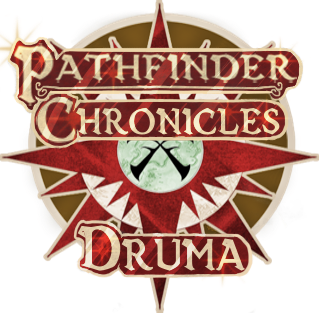The Kalistocracy of Druma

The texts and teachings of the prophet Kalistrade in the second century ar sparked a new religion, one combining the desire for personal enrichment and the appeal of occult rituals with the hopes, traditions, and grievances of the Kellid people living in Druma and beyond. Unlike most of Golarion’s religions, the Prophecies of Kalistrade are not verifiable as fact in the same way an angel, deity, or plane is. Instead, the sacred text appeals to practitioners’ faith in the mysterious promises of the dead dream-prophet and provides practical means for a follower to amass extraordinary wealth.

History
Kalistrade may have begun a religion, but he did so by building upon millennia of tradition. Had he created a doctrine free from these cultural touchstones, Kalistrade might have been forgotten as an eccentric hermit millennia ago. Instead, his teachings resonated with Druma’s people, capturing the imagination and dedication of hundreds of converts. Any study of the Prophecies of Kalistrade, therefore, requires an understanding of their predecessors.
The region’s earliest religious records trace back to the Speakers of the Pale, an ancient religion that emphasized the interconnected roles of individuals and communities. This tradition dominated the spiritual landscape of Druma during the Age of Legend, yet there are few practitioners of the faith today and even fewer reliable texts to shed light on what the religion looked like more than 10 millennia ago. Historical records suggest the term “Speakers of the Pale” referred to the priests, who acted as intermediaries between the spiritual world and the Kellid people. Their animistic beliefs do not seem to have incorporated any gods directly, though later adaptations introduced Desna, Erastil, and Gorum with varying degrees of prominence and influence. Importantly, the Speakers were bargainers, identifiable by their white ritual garb, and some of the oldest surviving myths feature these priests treating with supernatural powers to secure powerful tools for various Kellid heroes.
Unlike many of the specialized crafts from the Macridi Blade culture, the Speakers of the Pale religion survived the first half of the Age of Darkness intact. However, the newly emerged dwarves perceived the scattered Kellid tribes and their folk religion through a patronizing lens. When Kellids began fighting back against the dwarven colonizers, the Speakers led the efforts to uphold their traditional ways of life. Tar Taargadth’s dwarves cracked down on the priests, and although this spurred more Kellid resistance, the Speakers ultimately fled Druma. However, tales of the bold priests survived, and their legends fueled nativist sentiments for millennia.



